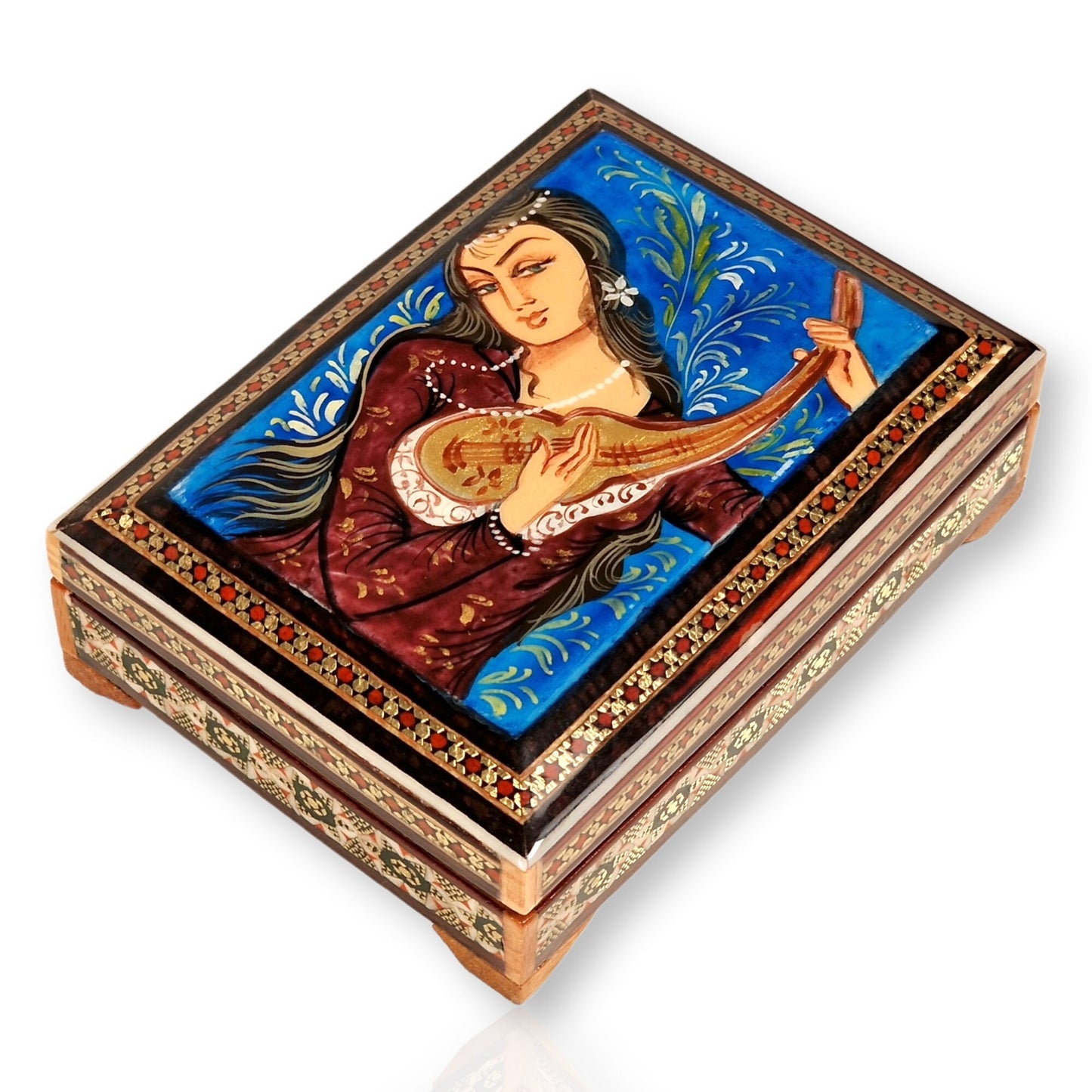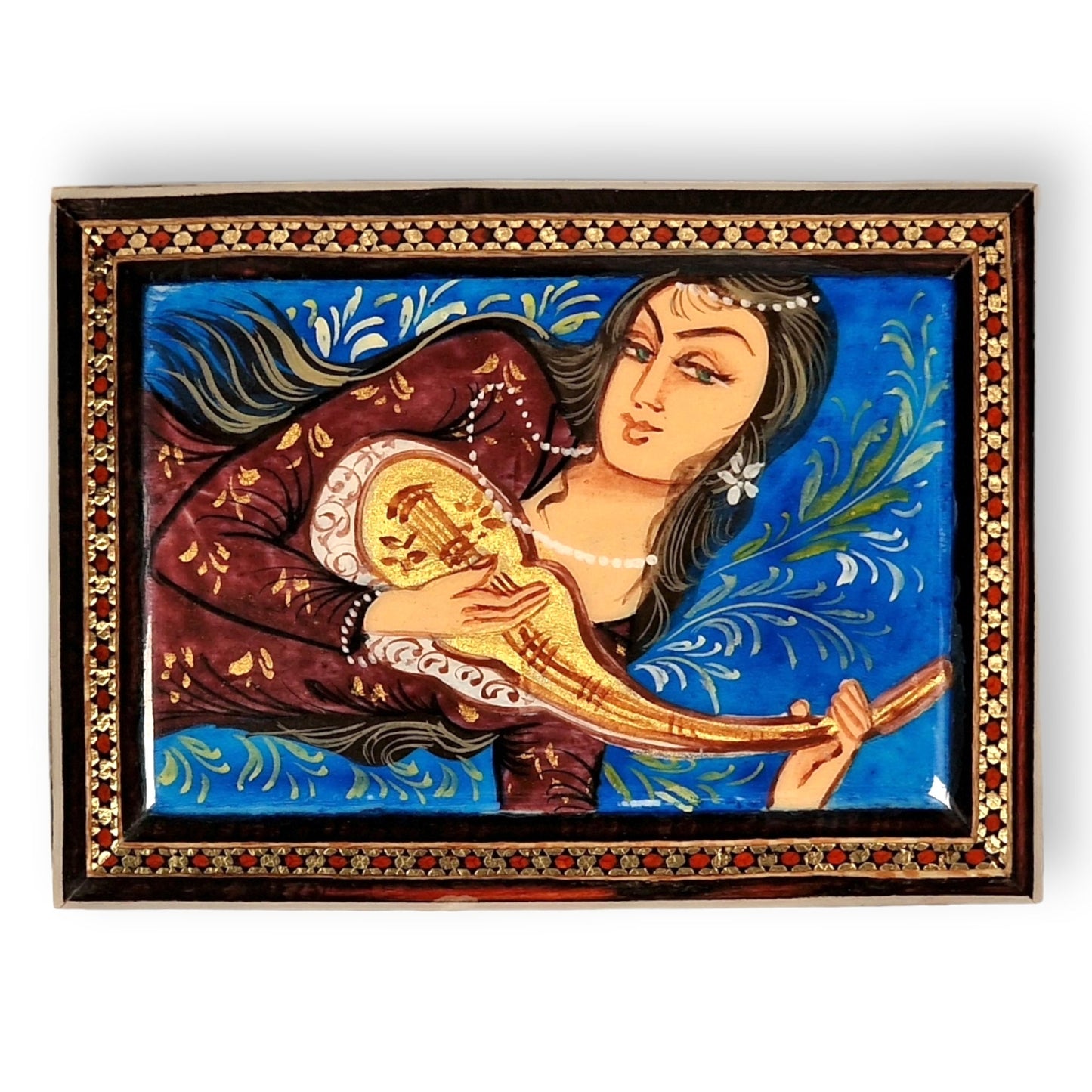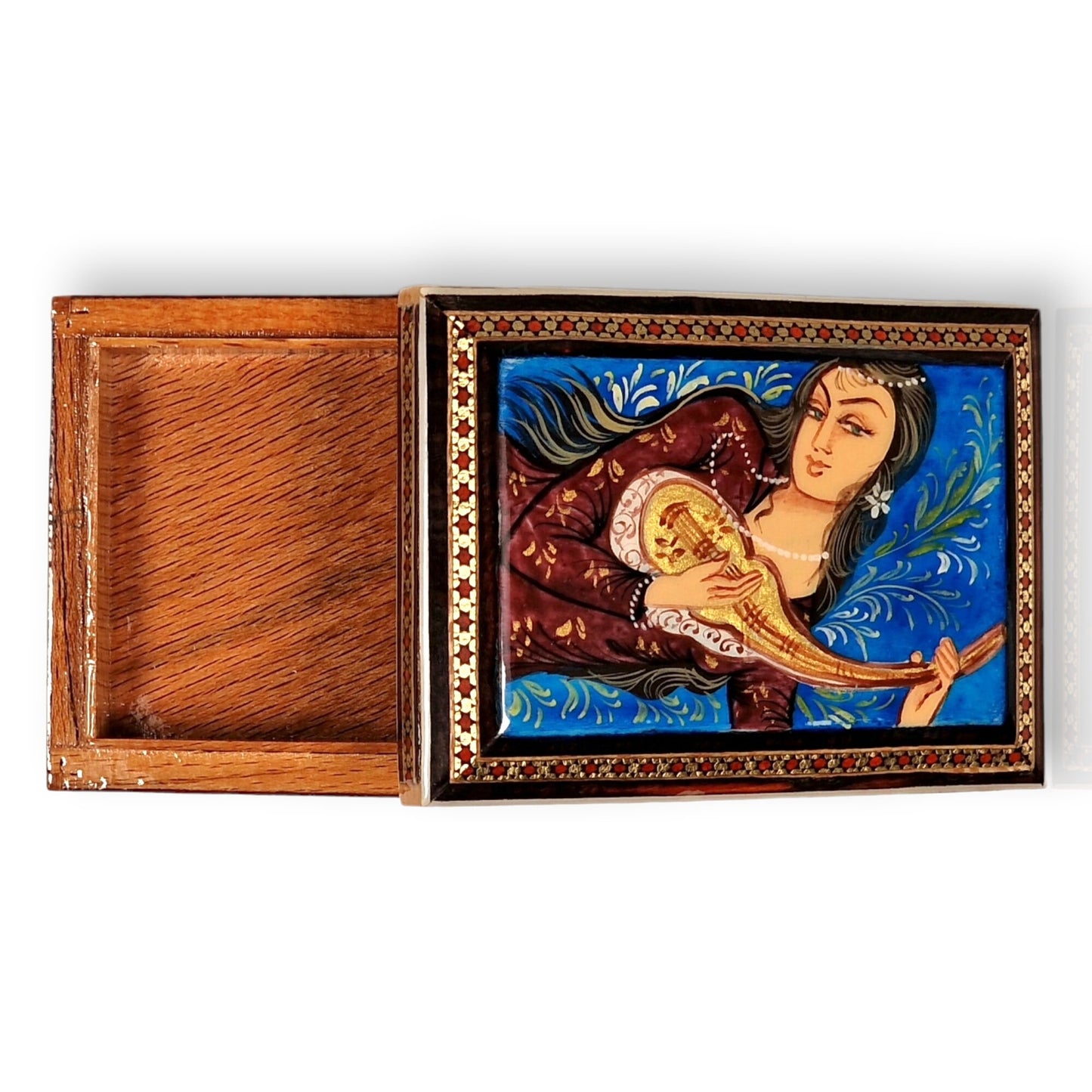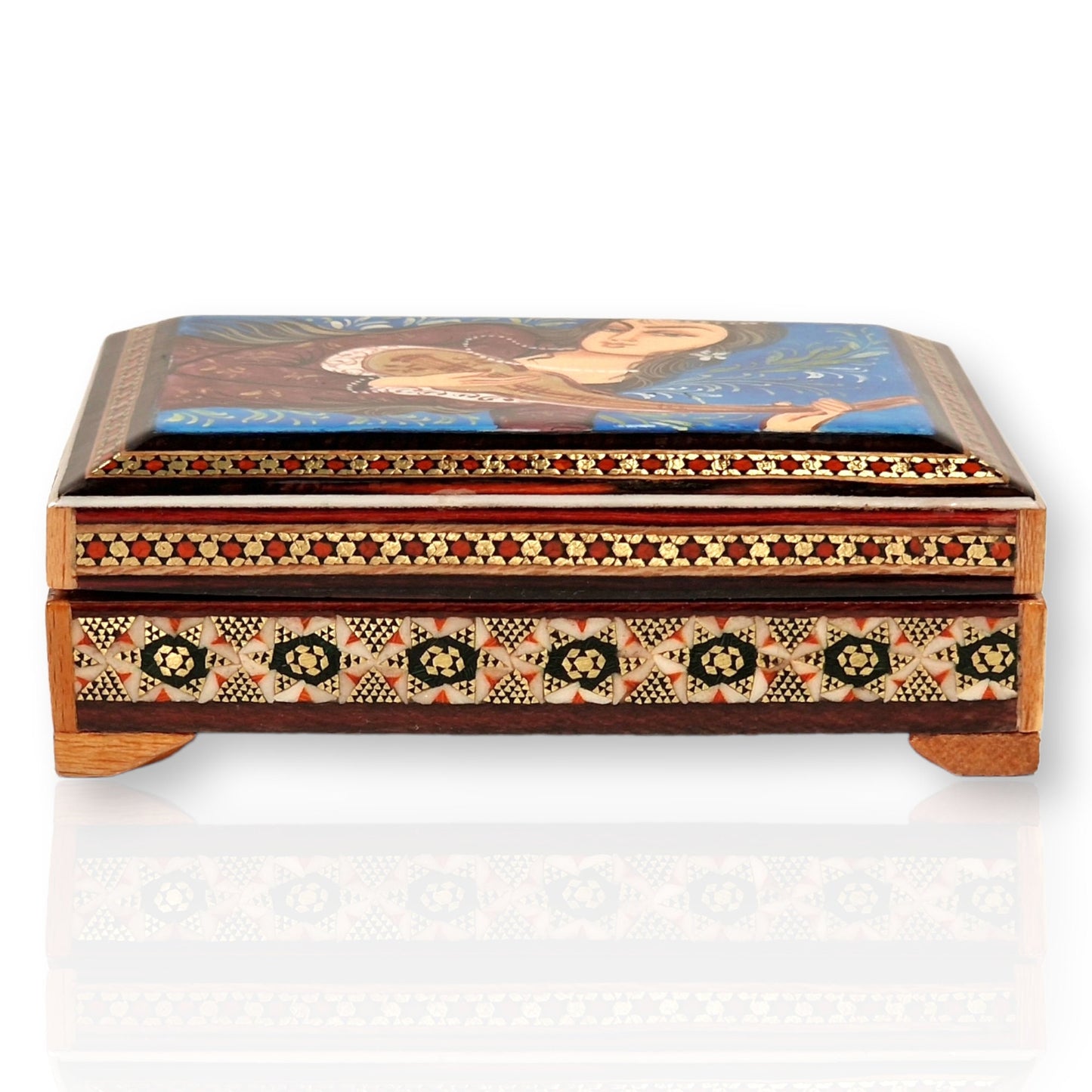Kervansara
Rectangular wooden jewelry box with marquetry or "khatam kari" hand painted with the miniature of a woman playing a Persian lute
Rectangular wooden jewelry box with marquetry or "khatam kari" hand painted with the miniature of a woman playing a Persian lute
Couldn't load pickup availability
Rectangular wooden jewellery box measuring 10.5 x 8 x 4 cm, hand-crafted and hand-painted with a beautiful and refined miniature design of a female figure playing a stringed musical instrument, which is probably a “barbat”, a type of lute widely used in Persian musical culture. The artist uses gilding to decorate the object, just as he does on the young woman’s clothing, giving a more luxurious appearance to the composition, with great delicacy and detail. The frame and sides are decorated with the laborious “khatam kari” (marquetry) technique, which gives the whole a special shine and an exquisite finish.
Persia is undoubtedly one of the most important centres of the world in the art of inlay, especially the beautiful cities of Shiraz and Isfahan, the latter being where it originated under the rule of the Seljuk dynasty, although the golden age came during the reign of the Safavid monarchs. It requires precise craftsmanship and a great deal of patience and delicacy to create such exquisite pieces that decorate boxes, jewellery boxes or pen cases as well as embellish frames, clocks, vases and backgammon sets, among many other objects.
The technique used by the artists consists of creating a kind of mosaic from a pattern of regular polygons that can vary in the number of sides and then decorating the desired surface with them, which is usually made of wood or metal. For this work, long wooden rods, camel bone for the white colour and metal (brass is usually used for the golden tones) are joined together to form triangles that are then pressed and cut into very thin sheets, preferably 1 mm thick, which will be the ones that will be carefully adhered to the utensil that is to be decorated.
Among the most common geometric designs are star-shaped patterns, and in the most valuable pieces precious metals such as gold or silver are used, and bone is replaced by ivory. To give you an idea of the complexity of this work, approximately 250 pieces of bone, wood and metal are needed to create just one cubic centimetre of khatam, and if the surface to be applied is curved, the sheet must be heated to make it flexible and therefore mouldable.
Share










